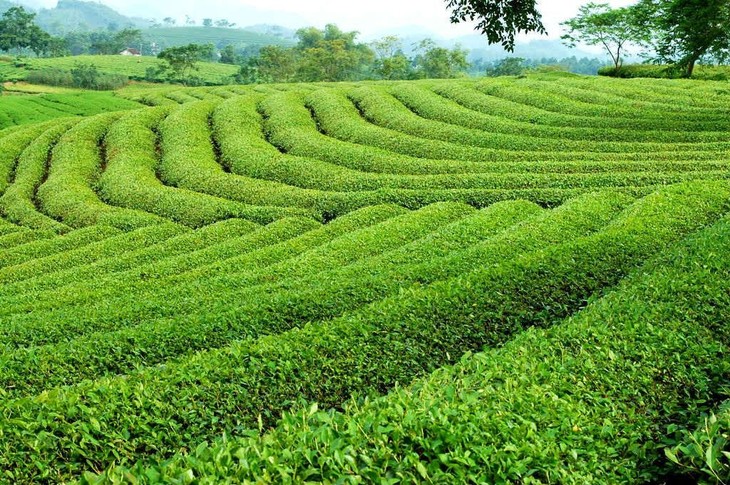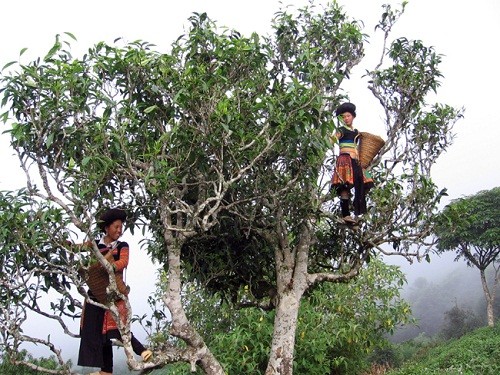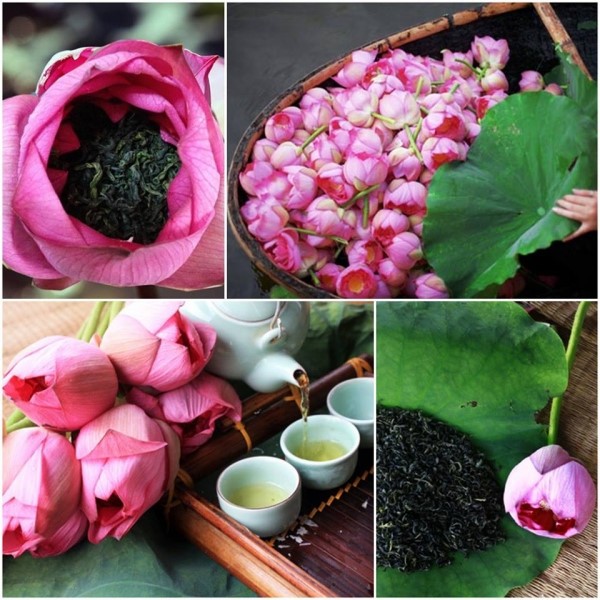(VOVWORLD) - I’m reading a letter from American listener John Rutledge, who is living in the US. It’s such a long time since his last letter to VOV. John said: “I still enjoy them and listen whenever I have time. I continued to like the content."
A: John also said he apologize for sending so few reception reports. Normally, reception of VOV's in southern China is excellent, but for some reason this time it was horrible, John reported. For over a week, he tried to listen, but failed most times. He didn't know it’s because of atmospheric conditions or outside interference.
B: It’s pity to know that VOV’s transmission to Guangzhou, China, on the frequency of 9840khz was not very good at the beginning of the year. But it has changed to the better. We’ve checked John’s reports for the program on February 5 and 10 which he said the overall quality was very good, especially compared to the past several days. SINPO rating was at 55455.
A: Thank you very much for your feedback, John. We’ll send QSL cards to your US address as you wished.
A: Atish Bhattacharya of West Bengal, India, tuned into a program on February 19th on 7220khz. He rated SINPO at 55444 which meant strong, loud, clear, and steady reception. Bhattacharya said: “I love to listen to VOV for its continuous supply of huge information about Vietnam’s culture, society, politics, international relationship, economy, business, personality and many more things. The list never ends. I am delighted to know that the US has opened its doors to Vietnamese mangoes.”
 Vietnam has more than 50 varieties of mango. Vietnam has more than 50 varieties of mango.
|
B: Vietnam can now export mangoes to the US, a demanding market where it already exports dragon fruit, rambutan, lychee, longan and star-apple. The Animal Plant Health Inspection Service of the US had authorized Vietnam to export mangoes to the US. Mangoes are grown in 59 among 63 localities in Vietnam. Of which, the Mekong Delta region accounts for 48 per cent of Vietnam’s mango plantations. About 96 per cent of Vietnamese mangoes are produced and sold locally. Vietnamese mangoes have been exported to 40 countries, including South Korea, Japan, Singapore, Australia, New Zealand, China and Thailand.
 A tea farm in Moc Chau plateau in the northwest mountain region. A tea farm in Moc Chau plateau in the northwest mountain region.
|
A: Mr. Bhattacharya, we’ve checked your reception report and will send you a QSL card soon. You said tea is your favorite drink and you believe any time is tea time. A majority of Vietnamese share the tea drinking hobby with you. Tea is the most popular drinking in Vietnam. Tea drinking is culture and an art.
B: Tea drinking is an integral part of Vietnamese culture. Present everywhere from daily tea sessions at homes, offices, weddings, meetings, and parties, tea brings friends, hosts, and guests in conversation and celebration. Tea is served several times each day in many Vietnamese families. Waking up in the morning, many elderlies would love to have a cup of hot green tea before starting a new day with the hope of refreshment and sound of mind.
 Shan tea trees in Ha Giang province. Shan tea trees in Ha Giang province.
|
A: Not only at home but also on the street do Vietnamese drink tea. Tea is sold commonly in street vendors which can easily be found near bus terminals, train stations, schools, offices or some corners in quiet alleys. Street vendors with hot or iced green tea is an interesting piece of Vietnamese street culture, where people, especially workers and students, often come to have some rest in short breaks or waiting for friends.
B: There are many aspects of tea culture worth noting. The therapeutic and medicinal functions of tea are well known: in hot weather, hot tea is devoured for its surprising cooling effect, and in cold weather for its warmth.
A: Tea can be divided into three kinds with different advantages including dried tea leaves, tea combined with herbal remedies and tea scented with flowers, popularly lotus and jasmine. The whole process is made by hand, in a very careful manner to transmit the natural scent into the tea.
 Making lotus-scented tea is an art. Making lotus-scented tea is an art.
|
B: Tea cultivation, the history of tea in Vietnam, its relationship to the environment, its economic impact on the ethnic minorities who grow it, the aesthetic aspects and social importance of tea-drinking rituals, could all provide topics for extensive research.
A: Within the time of the Letter Box, we can discuss very little about tea drinking in Vietnam. Listeners, we hope you’ll tell us about tea drinking in your countries.
B: Here’s a letter from Rolf Johansson of Sweden who heard VOV on 7280khz on January 30. He rated SINPO at 44434. Rolf said that he hadn’t received a reply nor QSL cards for his reports on January 22, August 8, and November 24 last year. We’ll check your address in our address book and reply you soon.
A: Grant Skinner of the UK reported listening to VOV on January 12 on the frequency of 7280khz. He noticed the noise sounded like fierce wind and rated SINPO at 15151. Mr. Skinner said: “Your broadcast would have been nice to listen to if there wasn’t so much noise to interfere with my listening.”
B: An email from Jim Seeber, a Dx’er in the US. He listened to VOV’s English broadcast on 7415 khz on Feb 19. Mr. Seeber told us that he used to listen to Vietnamese music while stationed close to An Thoi commune, Phu Quoc island district in 1969. He included a picture of his SB301 receiver for enjoyment.
A: Dahmani Rachid of Algeria emailed us saying that VOV is a place where he can increase his knowledge. VOV is simply the window open to news in Vietnam and the rest of the world.
B: Thanks a lot listeners for keeping radio alive by turning your radio on every day. Thank you for your support for VOV. We welcome your feedback at English Service, VOVworld, Voice of Vietnam, 45 Ba Trieu Street, Hanoi, Vietnam. Our email address is englishsection@vov.org.vn.